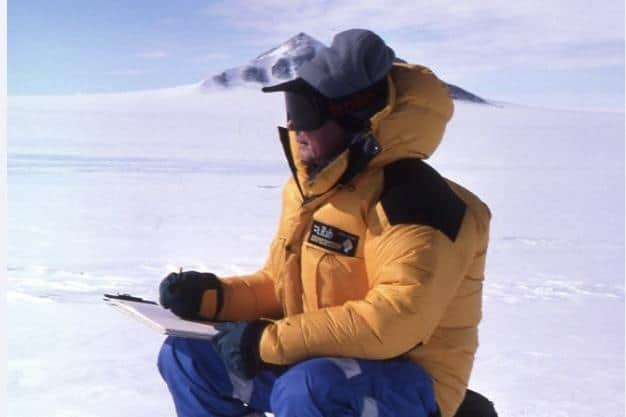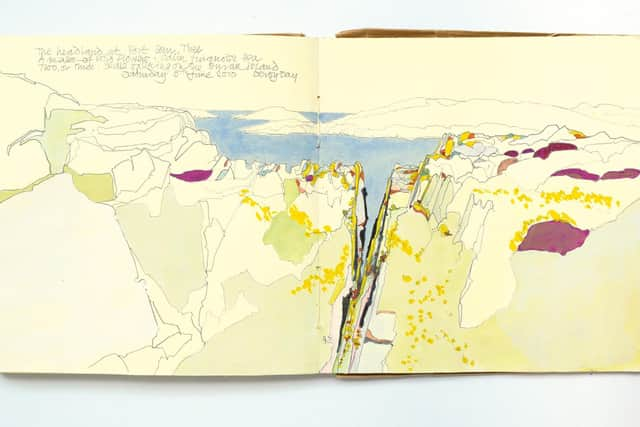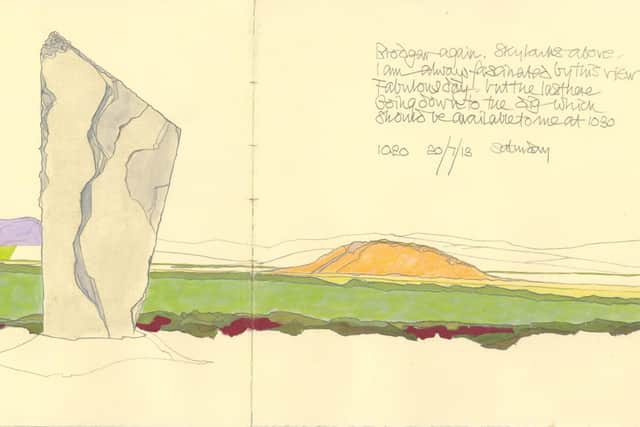Philip Hughes’s well-travelled notebooks to visit Stromness
From Leonardo da Vinci to Frida Kahlo, artists have long used sketchbooks as a means of developing their ideas. A completed painting hanging on a gallery wall might represent an imaginative destination, but often it’s the preliminary work that shows you the journey. Sometimes, however, the books artists carry with them can also become works of art in their own right, and this is certainly the case for the landscape artist Philip Hughes.
In 1988, Hughes was in Vienna when he found an almost square notebook containing recycled paper with a slightly textured finish; he fell in love with the look and feel of it and from then on began to carry one with him everywhere he went.
Advertisement
Hide AdAdvertisement
Hide AdOver the following quarter of a century, on travels that have taken him from the icefields of Antarctica to the deserts of Australia, Hughes has filled some 28 similar notebooks with more than a thousand drawings, and the best of these have now been gathered together into a 170-page hardback book, titled Philip Hughes/Notebooks. Some of his notebooks will also form the focal point for an exhibition opening at the Pier Arts Centre in Stromness later this month.


“As far as I’m concerned, each picture [in the notebooks] is a finished work,” he says. “They do lead on from time to time to other larger works, but that’s not really their intent. They themselves, and the writing which is always done in situ at the moment the drawing is done, that is the work. I call them notebooks rather than sketchbooks in the sense that, when an artist uses a sketchbook, they will usually be doing that in the process of capturing ideas, but they're not works in their own right.”
The writing Hughes is referring to is the handwritten text that always accompanies his drawings. Sometimes these notes are brief and to the point – "Kallakooph Creek, 7.10am, 28 April 2011”, for example – but sometimes they can be more expansive, more like journal entries than titles. Beside one particularly striking drawing made in Assynt, for example, he has written “Canisp and Suilven from just off the track to Glencanisp Lodge. My favourite land in the world. Visited so many times. Miracle weather. After ten testing days in Orkney, suddenly a beautiful calm day. 2.20, Sunday 23 October 2022.”
When he says “my favourite land in the world”, I ask, does he mean Scotland in general or Assynt in particular?
“If you said, ‘choose one place in the world that you think is the most striking’ I would say Assynt," he says. “There are these mysterious peaks that come out of nowhere. They're not particularly high, by the standards of the Highlands, but they seem very high because they come out of this plateau – they come straight up, as it were. There’s that, and then there’s this myriad of tiny little lochans that you get there. The mountains are residual mountains – they're what's left when all the rest of the sandstone has been eroded away, so they’re mountains by subtraction, and they sit on this bed of gneiss and granite, so there’s this contrast between these two different geologies.”


Geology has always been an important factor in Hughes’s way of looking at landscape. In her introduction to Notebooks the poet and novelist Kay Syrad writes “Perhaps the most unique feature of Hughes’s work is its basis in his geological knowledge of the structures of different types of rock, which apprehends the layers of flint in chalk cliffs, for example, or the lines of quartz in granite in Cornwall.”
Hughes also has a habit of homing in on specific geological details: a miniature, cross-shaped crevasse on a rock in Raasay, for example, or a fissure in a cliff on Tiree. Could he perhaps have been a geologist in another life?
“Yes, either a geologist or an astronomer,” he says. “These two things fascinate me.”
Advertisement
Hide AdAdvertisement
Hide AdHis interest in astronomy links to another strand of his work: the many drawings of ancient sites such as Stonehenge in England and Stennes and the Ring of Brodgar in Orkney, all of which feature in the new book.


The siting of these stone circles has long been understood as linked to the sun, moon and stars; however, in addition to this Hughes is also fascinated by the way in which these ancient sites speak to the surrounding landscape.
“Most people’s take on the positioning of these stones relates to astronomy,” he says. “But my interest is also in how they relate to the landscape they’re in, and I see them as sort of gigantic art installations. If you look at artists like Chris Drury or Richard Long, who build things in the landscape, they're carrying on that tradition. With those Orkney circles you’re particularly conscious of their positioning, when you walk around them, when you see them from afar... and Callanish [on Lewis] is in an amazing position, the way you look out and see water all around.”
Hughes will be in Orkney for the opening of the Pier exhibition. Will he be spending some more time drawing the archipelago’s standing stones during his visit? “Absolutely,” he says, “and this is the last year they’re doing the archeological dig at Brodgar, so I’ll be there again too.”
Philip Hughes/Notebooks is published by Thames & Hudson, price £40. The Notebooks exhibition at the Pier Arts Centre, Stromness, runs from 30 March until 18 May.
